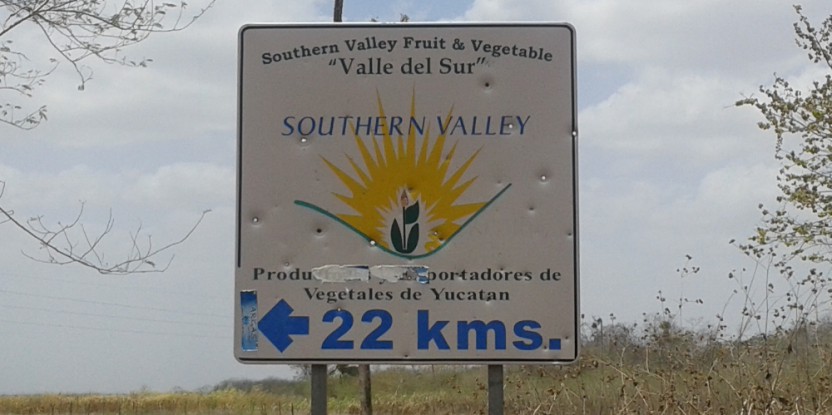
In Spanish the word for politics and policy is the same – ‘política’ – reminding us that policy is always political.
Although in Spanish the adjective ‘pública’ can be added to distinguish the senses that English tries to maintain, it can serve us well to focus on their overlapping meanings.
There is no policy truly outside of the political, partly because policy usually serves some political purpose and is designed with a particular political economy in mind, but also because policy is implemented in political contexts at different scales.
Political histories and cultures – both national and local – matter, and can shape the ways international initiatives, such as REDD+, are implemented on the ground.
So what political realities determine national policies and land use decisions? How does this power operate, at what scale and through whom? Who decides what, and who wins and who loses?
These are some of the questions we have asked people (and ourselves) in a 5 country study on Multilevel Governance in the context of REDD+ implementation, focusing on the landscape scale.
In Mexico we have completed a database of 150 interviews with people involved in 10 different changing landscapes in the southern states of Chiapas and Yucatán.
We are now analyzing the data to look at how governance and power relationships are perceived and how this has shaped landscapes.
Improved institutional arrangements and local governance are at the forefront of Mexico’s National REDD+ strategy, which takes a broad view of REDD+ as an opportunity to promote ‘sustainable rural development’ with an ‘integrated territorial approach’.
But in our fieldwork, it has been hard to find much evidence of new types of intervention actually changing current development trajectories.
The decision to promote national soya production is political, based on the falling value of the Mexican peso and the need to substitute soya imports with national production
Case studies that we looked at outside of REDD+ implementation areas were characterized by ineffective (and often politicized) subsidies for conventional agriculture, cattle ranching and plantations, with smallholders often prey to private agricultural consultants, credit banks, and agrochemical companies.
Certain structural processes clearly make territorial governance difficult, such as the weakening of the social property sector (ejidos and communities) in many regions, emigration, ineffective and poorly considered municipal governments, and even exchange rate fluctuations.
YES IT’S BAD, BUT…..
For example, in the municipality of Tekax in the center of the Yucatan peninsula, most people we interviewed recognized the severity of local climate change in the form of regular droughts, but believed that the remaining forest was unlikely to stay standing for very long – partly because the federal subsidies for the production of soya are now worth almost 10 times more per hectare than would be paid in payment for environmental services (PES) for the same land, were it forested.
The decision to promote national soya production is political, based on the falling value of the Mexican peso and the need to substitute soya imports with national production.
Soya production is an economy of scale, due to the machinery and agrochemicals required. That’s driven a recent but rapid accumulation of lands by outsiders in the municipality – both foreign and Mexican – and has put forests at risk as agricultural areas gradually increase.
In the landscape we studied, this policy threatens protected areas and can make PES schemes redundant in the eyes of local smallholders; it is difficult to see how REDD+ can compete with these kind of opportunity costs.
Our research has also shed light on encouraging dynamics.
An example of efforts to forge a more nested system of forest governance is evident in some the National Forestry Commission’s (CONAFOR) Special Programs in the REDD+ early action areas, particularly in the case of the Lacandon forest (Chiapas). Here CONAFOR is piloting a more integral approach to landscape management through the strengthening of ejido forest governance (formalizing rules, training and exchanges) and funds for PES, reforestation and other LED initiatives. Many of the funds are channeled through regional forestry associations to ejido authorities.
Those associations have become important brokers between the ejido members and CONAFOR; most people recognize that much power now resides at this level.
But the relative success of this CONAFOR program in detaining regional deforestation has depended largely on a budget that exceeds the funds destined to all the other CONAFOR special programs’ put together and also on having grafted current actions onto previous and existing processes in a region with a history of multiple conservation interventions.
Moreover, many of our interviewees suspected that this favoring of the Lacandon forest region was the result of political agreements taken at the highest level and did not necessarily reflect the best strategic choice for avoiding emissions in the state.
SPOKES IN THE INNOVATION WHEEL
Changing development trajectories requires new forms of intervention and governance; sectorial inertia and corruption (big and small) don’t tend to encourage innovation.
Many interviewees mentioned that the possibilities for multi-level governance were inhibited by a lack of interaction between different government sectors, particularly the environmental and agricultural ones. Others told us that collaborations between sectors can be difficult, precisely because small acts of corruption meant that institutions were reluctant to open themselves up to outside scrutiny.
In this sense, there is a ‘friction’ (or dissonance) between the capacities, level of cooperation and trust required to make a REDD+ type mechanism operate and the reality of politics and political culture in the different regions we have studied, where regional and local levels of government often lack efficacy and legitimacy.
Indeed, when reading REDD+ policy documents, attending REDD+ meetings or talking to REDD+ proponents, it has been striking how divorced much of the talk around REDD+ implementation seems from the realpolitik that drives change in the country.
Mounting security concerns and loss of faith in the democratic process in Mexico are causing a crisis of legitimacy, in which all levels of government have come under question, yet the implementation of REDD+ continues, responding to international deadlines and reproducing international discourses around participation, equity and rights that seem at best aspirational and sometimes just ingenuous.
Ultimately, this lack of realism is unhelpful, because it papers over complicated political issues and ignores persistent structural exclusions that will eventually affect REDD+ implementation.
We have seen that under certain conditions, multi-level governance can crystallize and to good effect.
But in our experience, examples were restricted to certain territories, such as protected areas, strategic watersheds or – interestingly – regions severely affected by extreme climatic events – such as hurricanes or forest fires.
(Could it be that only very severe threats to livelihoods create sufficient momentum to overcome political inertia?)
Many neighboring territories, considered less ‘strategic’, are left unattended and remain ignorant of REDD+, despite a national publicity campaign and the current national consultation process on the national strategy.
In these landscapes, land use decisions are determined more by the shifting competitive advantages that the current political economy offers – be the product cattle, oil palm, soya or sorghum.
Yes, it’s business as usual.
Tim Trench is the Mexico country coordinator for the ‘Multi-level governance and carbon management at the landscape scale’ CIFOR research project. Contact Tim at – tim_trench@yahoo.co.uk
We want you to share Forests News content, which is licensed under Creative Commons Attribution-NonCommercial-ShareAlike 4.0 International (CC BY-NC-SA 4.0). This means you are free to redistribute our material for non-commercial purposes. All we ask is that you give Forests News appropriate credit and link to the original Forests News content, indicate if changes were made, and distribute your contributions under the same Creative Commons license. You must notify Forests News if you repost, reprint or reuse our materials by contacting forestsnews@cifor-icraf.org.
